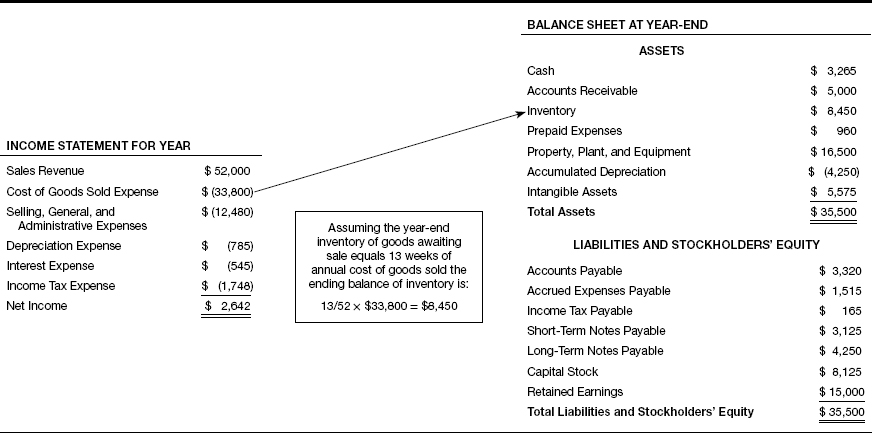CHAPTER 6
COST OF GOODS SOLD EXPENSE AND INVENTORY
Please refer to Exhibit 6.1 at the start of the chapter. (Chapter 5 explains the design of this exhibit, which is also used in following chapters.) This chapter focuses on the connection between cost of goods sold expense in the income statement and the inventory asset in the balance sheet. Recall that the business in the example sells products, which are also called goods (in general) or merchandise (for retailers).
EXHIBIT 6.1—COST OF GOODS SOLD EXPENSE AND INVENTORY
Dollar Amounts in Thousands

Holding Products in Inventory before They Are Sold
Cost of goods sold expense means just that—the cost of all products sold to customers during the year. The revenue from the sales is recorded in the sales revenue account, which is reported just above the cost of goods sold expense in the income statement (see Exhibit 6.1). Cost of goods sold expense is by far the largest expense in the company’s income statement, being almost three times its selling, general, and administrative expenses for the year.
Putting cost of goods sold expense first, at the head of the expenses, is logical because it’s the most direct and immediate cost of selling products. Please recall that this expense is deducted from sales revenue in income statements so that gross margin is reported there—see Exhibit 2.2 for an example of an income statement that reports ...
Get How to Read a Financial Report: Wringing Vital Signs Out of the Numbers, 8th Edition now with the O’Reilly learning platform.
O’Reilly members experience books, live events, courses curated by job role, and more from O’Reilly and nearly 200 top publishers.

